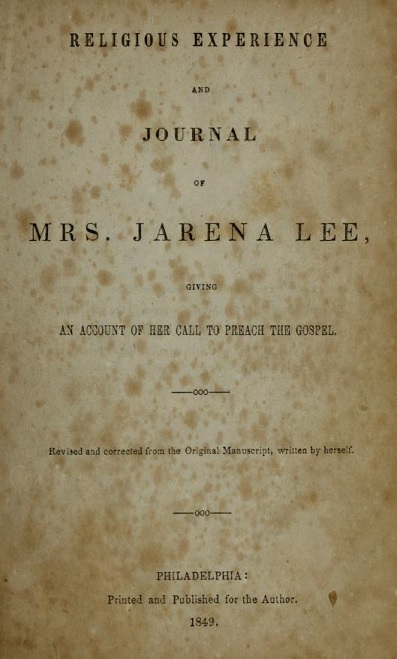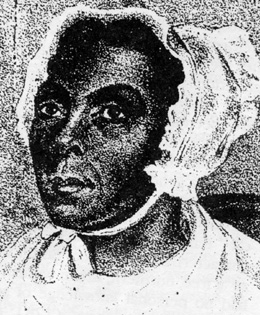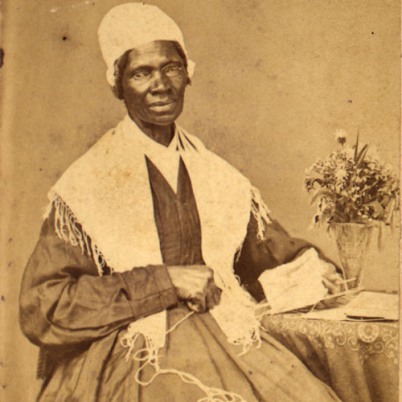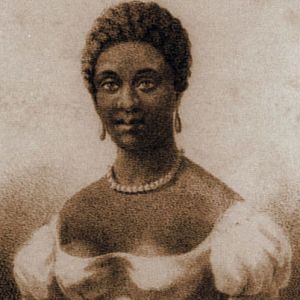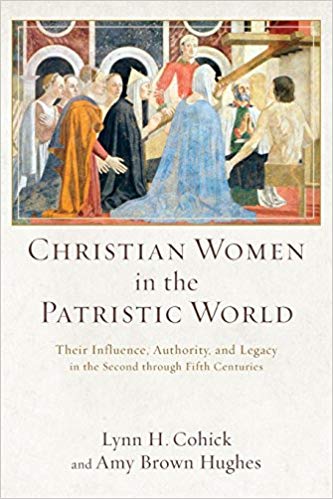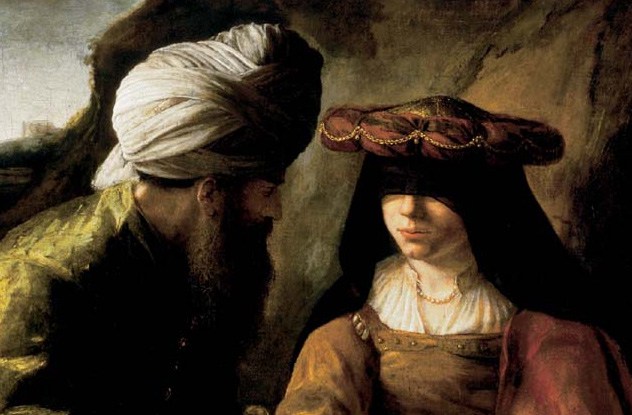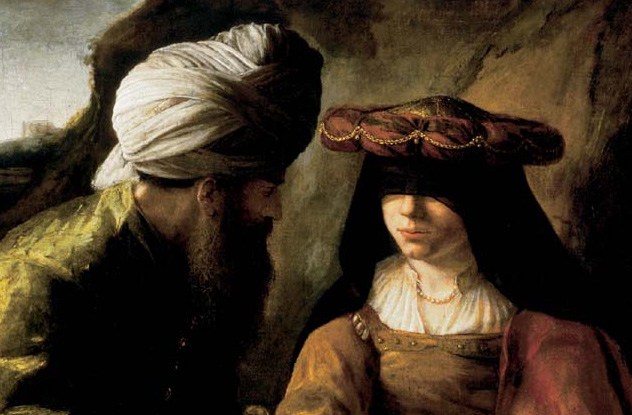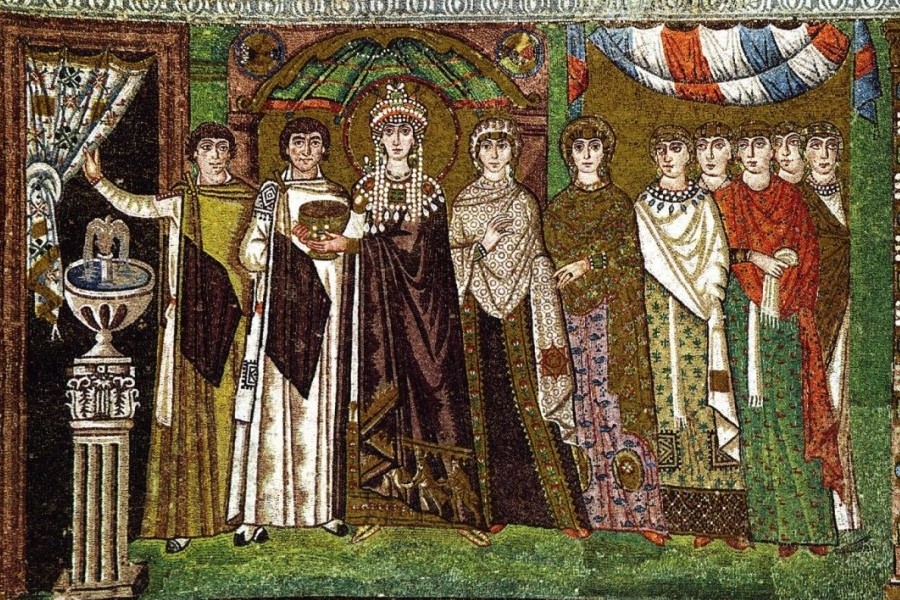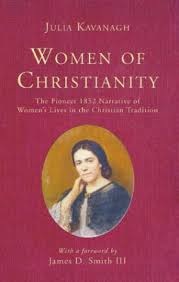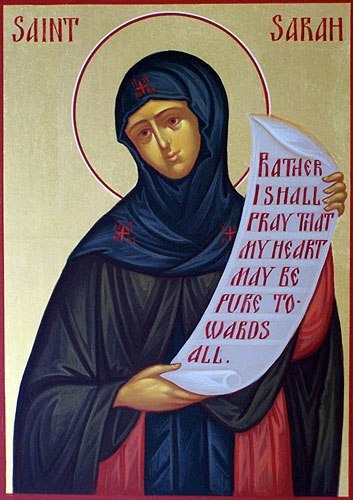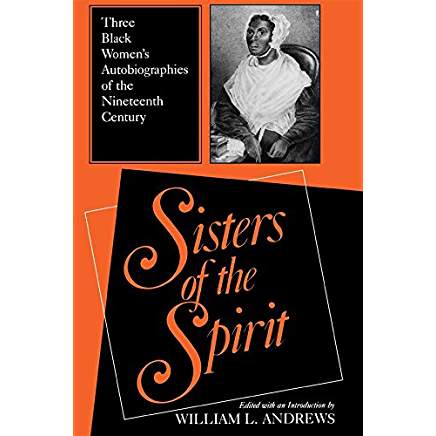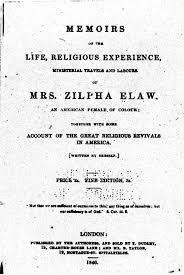
Though racism continues to put obstacles in the way of black women, they have not allowed the prejudice to keep them from following their callings from God to serve in His kingdom. What may be very surprising to some is that even black women who were living in the time of slavery in the United States had the courage to rise above their circumstances and obey God’s command to take the gospel to the lost.
We began this series by sharing the story of the first black female writer to be published – the poet Philis Wheatley. We continued our series with an emancipated slave who became a black itinerant evangelist, abolitionist, women’s rights activist and writer – Sojourner Truth. For the next few weeks we will relate the stories of black female preachers from the nineteenth century. Yes, you read this right – there were many courageous black women who preached as the Holy Spirit moved them. Many thousands of people were led to Christ through their ministries. Anyone – female or male, black or white, poor or rich, may share the Gospel (Joel 2:28 and Galatians 3:28).
For the last two weeks we took a look at the life of Jarena Lee. We shared the details of her childhood, conversion, life as an evangelist and as a writer. This week we turn to the story of a woman who was not a slave, but still lived under the shadow of its evil.
Zilpha Elaw – Evangelist
Zilpha Elaw was born in 1790 to free black Christian parents near Philadelphia, Pennsylvania. Zilpha was one of the only three surviving children of the twenty-two babies her mother gave birth to. Zilpha was twelve years old when she lost her mother who died in her twenty-second childbirth. Her father then put Zilpha with a Quaker family where she lived until she was eighteen years old. Her father died eighteen months after placing her with the Mitchel family.
Growing up with her father, Zilpha had become accustomed to having devotions and hymn singing every day. Though Zilpha appreciated her new Quaker foster parents she was surprised at how little outward devotion they paid to the Lord. Because of this her own earnest desire to follow God waned. She followed the childish pleasures that were all around her, but occasionally had feelings of remorse as she remembered her earlier devout home.
During this time the Methodists were evangelizing strongly in their area. Zilpha was allowed to attend their services once a fortnight on Sabbath afternoons. She loved the preaching and the message of God’s love and began to deal with her feelings of shame and guilt for her sin. She gradually came to accept Christ’s forgiveness and assurance of her salvation. She studied the Word and increased in knowledge daily, but she lacked full assurance. She prayed that God would send her complete assurance and in her memoirs she tells how God answered her prayer.
One day while milking a cow, Zilpha saw the figure of Jesus coming toward her. He opened his arms and he smiled at her. She knew it was not her imagination because even the cow turned her head and bowed her knees and cowered to the ground. After this wonderful manifestation, the peace of God which passes understanding was communicated to her heart with the joy of the Holy Spirit. She said that from that day on she “never entertained a doubt of the manifestation of his love to my soul.”[1]
In 1810, Zilpha married Joseph Elaw. Joseph was only a nominal Christian and did not appreciate Zilpha’s zeal for Christ. In fact, he often chided her and tried to keep her from going to religious meetings. Zilpha regretted having become unequally yoked with a non-believer, but she did her best to be submissive to her husband. She warned girls that because they must be in subjection to their husbands it was of utmost importance to marry a Christian. Otherwise the believing wife must either sin by obeying her husband or cause discord in the family when she won’t follow him into sin.
Zilpha gave an example of the trials of being married to an unbeliever with the story of a time when her husband insisted that they go dancing. In those days ballroom dancing was seen as worldly. Zilpha attended the “vaporous bubble of worldly gaiety and pleasure” but sat on the side weeping. Her husband found that it wasn’t as pleasurable as he thought and he never made her go again. Zilpha gave the praise to God for protecting her.
Joseph’s trade caused him to move to Burlington, New Jersey in 1811. Zilpha went along with him and bore him a daughter the following year. She was happy there because the Meeting House was only a short distance from their home. She studied and grew spiritually throughout the next few years.
In 1817, Zilpha attended her first American camp meeting. She described camp meetings as heaven on earth, with the singing of praises to God in the midst of HIs beautiful creation. Meetings went on day and night with thousands in attendance. Hundreds of souls came to Christ daily.
At one of the camp meetings, Zilpha received her call to preach. She did not think herself a likely preacher since she was black and a woman. She did not seek to lead meetings or preach formally, but she did begin to share the Gospel by going into people’s homes and telling them of forgiveness and salvation in Christ. In this manner she led whole households to Christ.
Zilpha was comfortable sharing the Gospel in this manner until the time that she visited her only sister, Hannah, who was dying. Hannah had a vision of Heaven and angels and insisted that they told her that Zilpha must preach the Gospel. Zilpha had a hard time believing this prophecy and she kept it to herself for a long time.
Finally, God used other means to convince Zilpha. He allowed her to be very sick, almost to death, for nearly two years, and then the He marvelously healed her and after many more months she was able to go to Meetings again.
Zilpha could not imagine that God could use her but eventually she humbly accepted the fact that “God hath chosen the foolish things of this world to confound the wise, and the weak things of the world to confound the mighty” (I Corinthians 1:27). She began her public ministry.
When her husband found out, he was troubled in his mind about it. Zilpha was pleasantly surprised that he did not completely object; his concern was that they would become a laughing stock to their neighbors because his wife was preaching. He asked her to stop preaching publicly, but Zilpha felt that the call from God was so strong that she needed to obey it.
About this time her husband became ill with consumption. He grew worse and so Zilpha’s laid aside many of her ministry duties as she cared for him and her daughter. Her biggest concern however was that he was not yet saved. A short time before his death he seemed to change his mind and soften toward religious things and asked for Zilpha’s forgiveness. He finally went to be with the Lord on January 27, 1823.
At this time Zilpha needed to support herself and her daughter and pay all of their debts including funeral expenses. Zilpha went to work as a servant and put her daughter out to servitude as well. This nearly ruined Zilpha’s health, so she eventually started a school, which was greatly appreciated by the black people in their neighborhood.
Zilpha was able to care for herself and her daughter in this way, but she wasn’t getting ahead with the debts. Here “Satan bound me down for two years” and then she remembered her call to the ministry. She sought the Lord with prayer and decided to trust Him completely and step out in faith and pursue her calling. She put her daughter under the care of some relatives and set out to follow where the Lord led her. She believed that God would bless her and help her do what was right.
Next week we will see how Zilpha began her journey of preaching salvation to lost souls.
[1]“Memoirs of the Life, Religious, Experience, Ministerial Travels, and Labours of Mrs. Elaw.” in William, L. Andrews. Sisters of the Spirit: Three Black Women’s Autobiographies of the Nineteenth Century. (Bloomington, IN: Indiana University Press, 1986). page 56.
